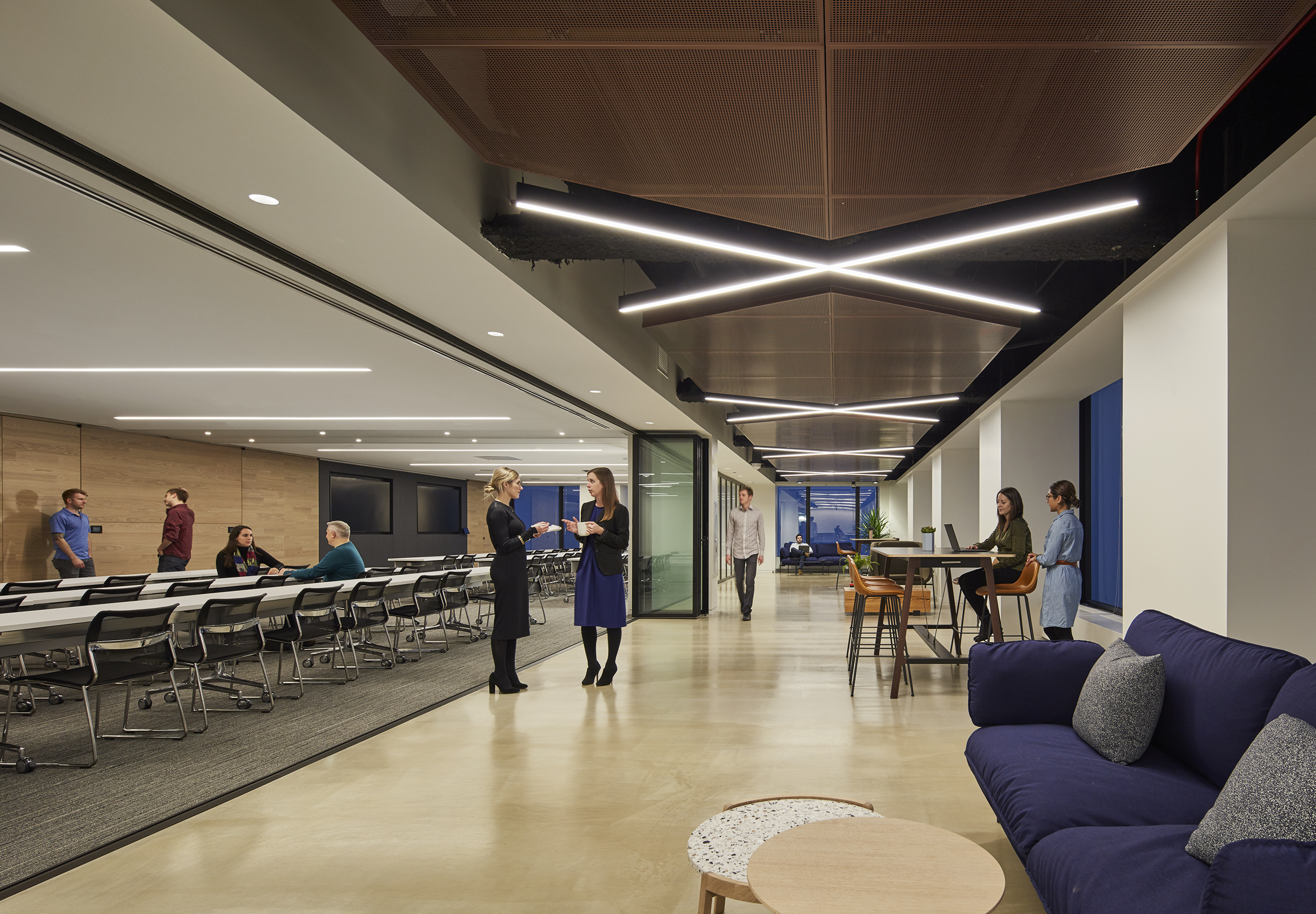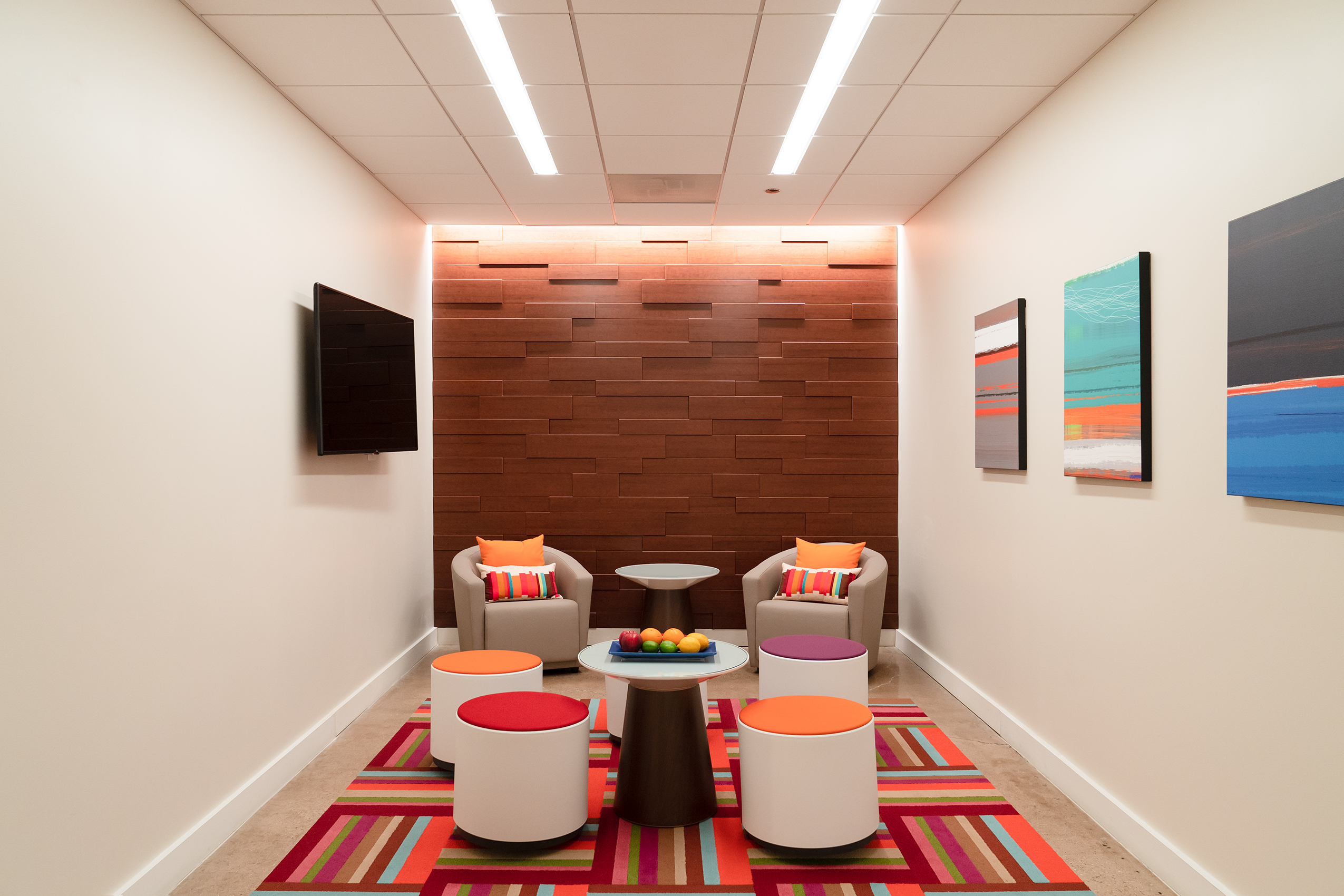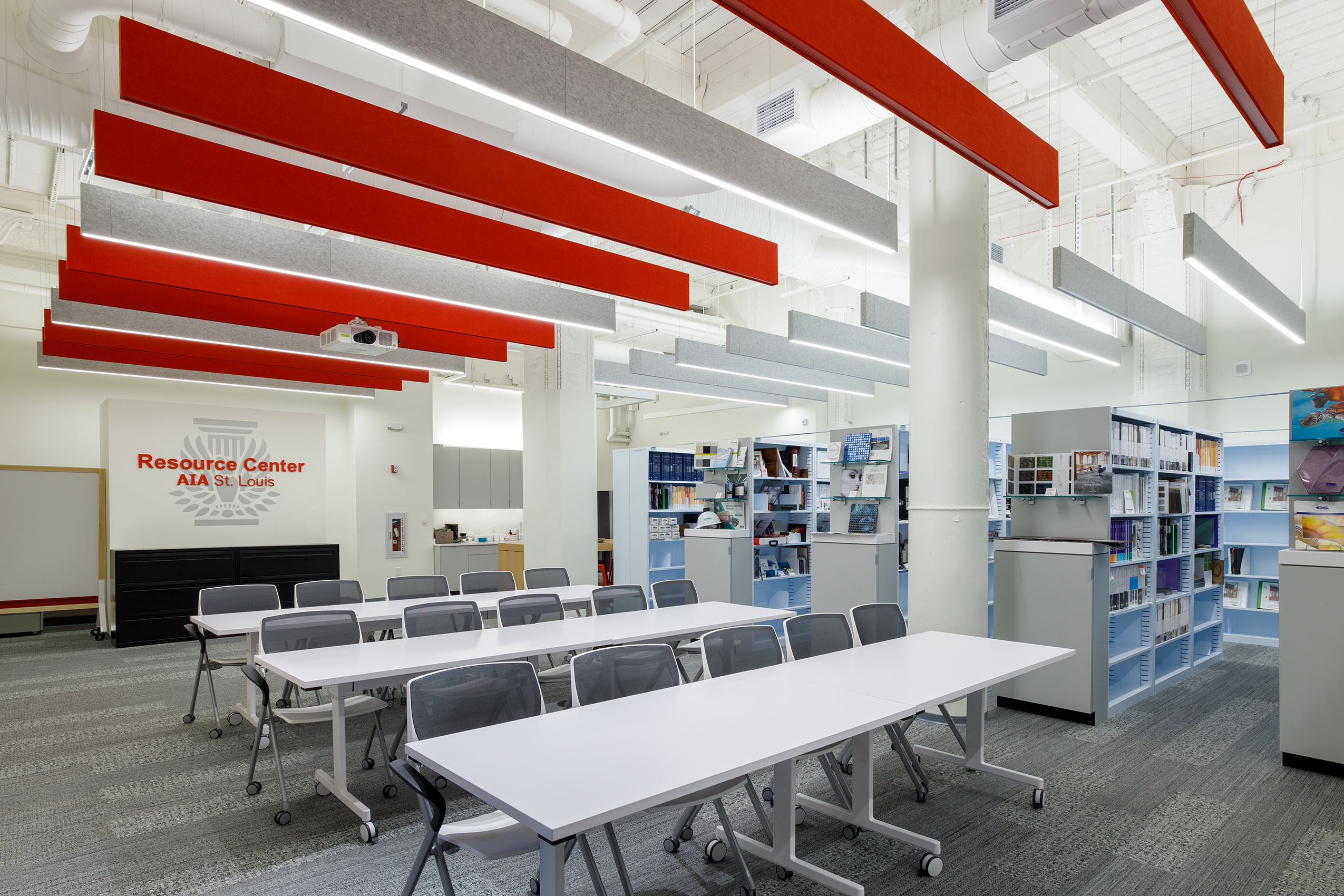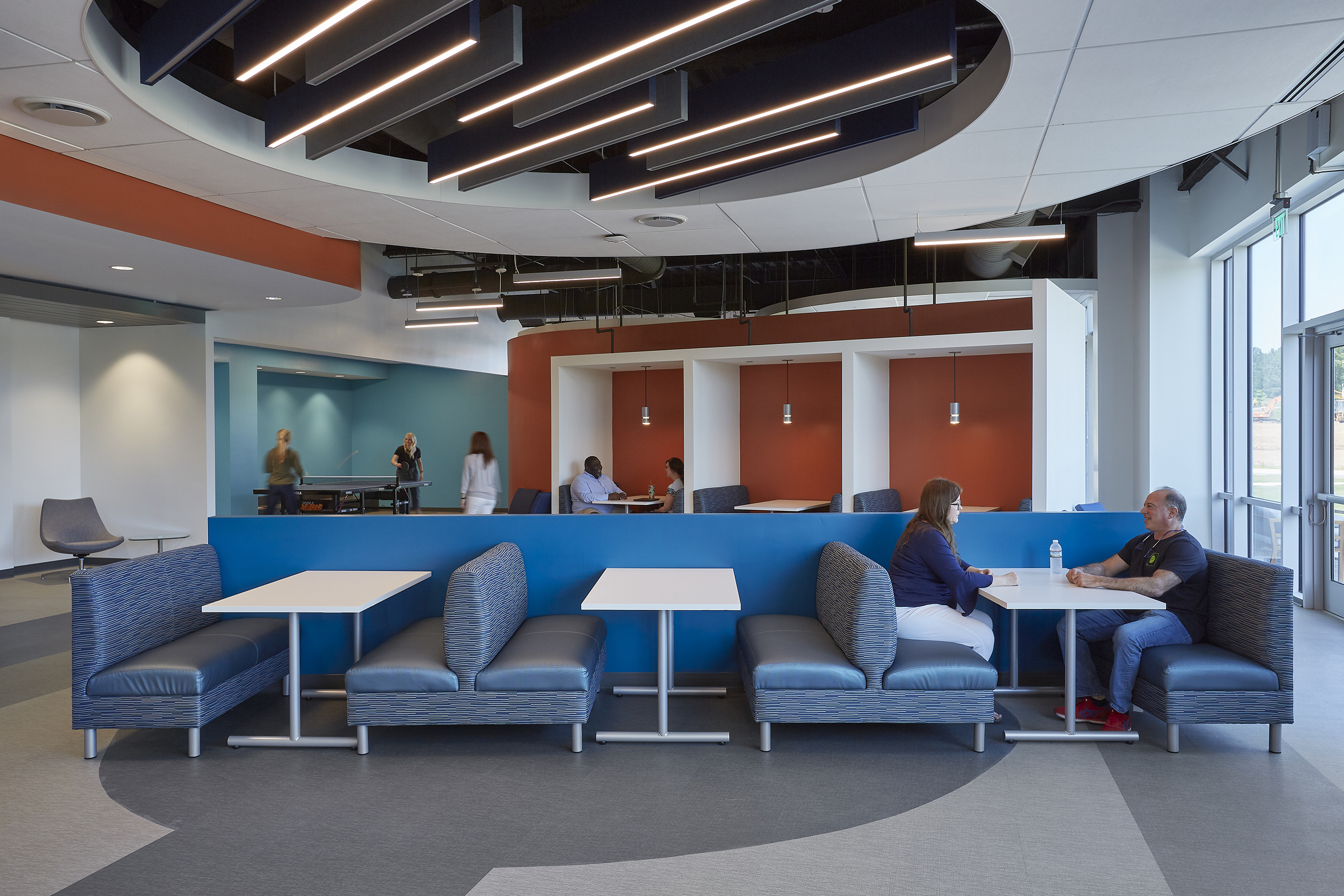Focal Point, LLC shares the 2020 lighting trends we can expect to see permeate commercial environments and propel changes in the workplace.

As a new year approaches, new design trends emerge. Beyond the always popular “color of the year” presented by authorities of the paint and color industry, and furniture concepts constantly evolving to respond to the transformation of the office as we know it, designers are becoming increasingly aware of other elements that define interior spaces, such as lighting.
The inception of solid-state lighting (SSL), which uses semiconductor light-emitting diodes (LEDs) and other light sources such as OLEDs and PLEDs, has redefined how lighting can enhance interior spaces. The growing adoption of LED lighting in new construction and remodels over the last decade has revolutionized commercial interior lighting, from sleeker form factors to precise controllability of luminaires.
LED luminaires contribute to curtailing the environmental impact of lighting through the reduction of energy consumption and their long useful life, multiple times that of fluorescent or other legacy light sources. The confluence of these highly efficient light sources, consumers’ awareness of the environmental impact of building products, and designers’ focus on developing unique environments centered around human well-being brings about a transformational stage for the building industry.
In 2020, we can expect to see the following lighting trends permeate commercial environments and propel changes in the workplace that promote well-being and create more comfortable environments.

Advanced LED technology that delivers light people prefer
LEDs are capable of offering more than energy savings. These inherently electronic devices have transformed luminaires from simple light sources to devices that support intelligent building management. As technology progresses and the desire to deliver more human-centric environments increases, LEDs are being developed as a means to address human needs beyond simple task lighting.
For millennia, we have evolved under the light produced by the sun, fire, and candlelight and have become accustomed to the warm glow of these natural light sources. In the past few years, independent studies have converged to identify common benefits resulting from the optimization of the spectral content of LEDs to provide a rendered light quality that is preferred by humans, likely resulting in enhanced productivity and well-being.
More specifically, these studies prescribe a general over-saturation in the red spectrum as well as an overall slight over-saturation of the light source to enhance the perceived appearance of common objects. The resultant spectrum renders skin tones which appear more natural and healthier, organic materials such as wood which seem warmer, and colors which look more vibrant overall. Using this information, specifiers can select light sources that are not only functional and sustainable, but that also enhance the architecture and experience of a space, making the occupants feel more comfortable.

Addressing human comfort and well-being sustainably
Achieving occupant comfort goes beyond addressing light quality. With the U.S. unemployment rate at record lows and a transition of the baby boomers out of the workforce, companies are seeking ways to attract and retain a new generation of talent. Members of the younger generations are environmentally conscious. They seek brands that support environmental sustainability and recognize the value of delivering a built environment that fosters human well-being. Lighting manufacturers have recognized the trend toward creating a healthier built environment by developing new products that support occupants’ comfort and add value for building owners.
One of those innovative new product segments is acoustic lighting. With the wide-open spaces featuring open ceilings and hard finishes that have become commonplace in office design, a need to mitigate high noise levels and ensure speech privacy has arisen. Acoustic luminaires, which are single sources that deliver optimal illumination while addressing noise levels, are ideal for open office environments where reverberation issues can negatively impact productivity.
Most recently, leading architectural lighting manufacturers have expanded this concept by introducing integrated acoustic lighting and ceiling systems. The flexible systems deliver optimal light levels and resolve reverberation issues while leveraging the ceiling plane to simplify the specification, sourcing, and installation process with a cohesive aesthetic. The systems are typically available in a variety of color options and form factors, with linear baffles, cloud, and tile systems being the most prevalent. Selecting an integrated acoustic lighting and ceiling system allows specifiers to achieve the desired aesthetic, lighting, and acoustic comfort within the constraints of a budget.
Also, the luminaire and baffle systems often use polyethylene terephthalate (PET), an eco-friendly form of polyester-based felt, reducing their ecological impact. The sustainable material typically contains a high percentage of recycled content from plastic bottles.

Building standards gain traction
In addition to newly available solutions, specifiers should be aware of the organizations and standards that are leading the charge and promoting the importance of delivering environments that address human health and well-being, as well as sustainability. Global building certifications such as the WELL Building Standard™ (WELL) and the Leadership in Energy and Environmental Design (LEED) publish specific recommendations and targets on how to measure and achieve optimal light levels and reverberation times for various occupied environments.
WELL, a premier standard for buildings, interior spaces, and communities, is seeking to implement, validate, and measure features that support and advance human health and wellness based on scientific and medical research. This standard focuses on the connection between building and occupant health and wellness. LEED focuses on providing a standard for the design, construction, and operation of high-performance buildings, with the goal to maximize occupant health and productivity by using fewer resources and reducing waste.
As we enter a new decade, we expect lighting to play a larger role in commercial interior design. Topics such as light quality, sustainability, human comfort and well-being are top-of-mind for specifiers and supported by building standards such as LEED and WELL that will continue to be the focus in 2020. Now is the time for specifiers and building owners to educate themselves on advanced lighting technologies and innovative products that differentiate interior spaces to future-proof buildings and attract prospective tenants and employees.

